Compared To Other Headphones
The Bowers & Wilkins Px7 S2 are the successor of the Bowers & Wilkins PX7 Wireless. There’s been a couple of changes to their design: their build received an upgrade, so they feel even more premium and high-quality, and they support aptX Adaptive codec, which is good if you want to stream high-quality audio with lower latency. They’re also compatible with a new companion app that offers bass and treble sliders to help you adjust the sound, although the customization features aren’t as robust compared to competitors like the Sony WH-1000XM5 Wireless or Sennheiser MOMENTUM 4 Wireless.
Check out our recommendations for the best over-ear headphones, the best noise cancelling headphones, and the best closed-back headphones.
Sony WH-1000XM5 Wireless
Searching
Finding Store
Depending on your preferences, you may enjoy either the Sony WH-1000XM5 Wireless or the Bowers & Wilkins Px7 S2 Wireless. The Sony have a more neutral sound profile, although they’re still pretty bass-heavy, have a virtual soundstage feature, and a significantly better performing ANC system. They’re also more customizable. In contrast, the Bowers & Wilkins are more comfortable, better-built, and support aptX, aptX HD, and aptX Adaptive codecs to help you get good sound quality via Bluetooth. They can also receive audio via USB-C, which some users may prefer.
Bowers & Wilkins Px8 Wireless
Searching
Finding Store
The Bowers & Wilkins Px8 Wireless are the more premium sibling of the Bowers & Wilkins Px7 S2 Wireless. Although both headphones have high-end build quality, the Px8 are made with different components like aluminum and Nappa leather in their frame as well as being equipped with a carbon diaphragm instead of a cellulose one used by the Px7 S2, which is advertised to help lower distortion. Both headphones perform similarly in this aspect, though. That said, the Px8 are more comfortable, have better noise cancelling, and their sound profile is a bit more neutral, although it’s still bassy-heavy.
Sony WH-1000XM4 Wireless
Searching
Finding Store
The Sony WH-1000XM4 Wireless are better over-ears than the Bowers & Wilkins Px7 S2 Wireless. The Sony are more comfortable, have a more balanced sound, although it’s still bass-heavy, and have a virtual soundstage to help immerse you in your audio. Their ANC system offers a significantly better noise isolation performance, and they have more customization features, thanks to their companion app. That said, the Bowers & Wilkins are better-built and support aptX Adaptive codec, so you can stream high-quality audio with low latency.
Bowers & Wilkins PX7 Wireless
Searching
Finding Store
The Bowers & Wilkins Px7 S2 Wireless are the next generation of the Bowers & Wilkins PX7 Wireless. The second generation have a better build quality, a more balanced and neutral sound profile, which some users may prefer, and their microphone performance is significantly better. They also support aptX Adaptive codec for streaming audio in higher quality with lower latency. However, the predecessor have a better noise isolation performance.
Sennheiser MOMENTUM 4 Wireless
Searching
Finding Store
The Sennheiser MOMENTUM 4 Wireless and the Bowers & Wilkins Px7 S2 Wireless are both good headphones, but the Sennheiser have a slight edge. While both headphones are comfortable, the Sennheiser have a more neutral sound profile, although it’s still pretty bassy, and have a significantly longer continuous battery life. They’re also more customizable. On the flip side, the Bowers & Wilkins are better-built and have a more stable fit.
Bowers & Wilkins PX7 S2: price and release date
- $399 / £379 / approx. AU$575
- Released June 29, 2022
The Bowers & Wilkins PX7 S2 are available to buy from June 29, and in the United Kingdom you’ll need to set down £379 to snag a pair. In the United States they are selling for $399, which means that in Australia they will cost around AU$575.
So, definitely not cheap – but not as astronomically priced as some B&W headphones we remember at launch (PI7 earbuds, we’re looking at you) and the keen-eyed will note that the price exactly matches that of the excellent Sony WH-1000XM5. It’s bold from B&W – and given the considerable talents of the firm’s PX7 over-ears, why not? A little confidence has been earned – but still, tough company to keep.
The headband is lovely and cushioned, as are those slightly smaller earcups (Image credit: Future)
Design
- Lovely, premium looks
- Improved comfort
- Physical buttons
Classy and luxurious are adjectives this website has often used to describe Bowers & Wilkins headphones, and the Px7 S2 don’t fall far from the tree. From the PX there’s been a consistent through line: the sculpted metal arms, and earcups with fabric finish with aluminium Deco plate and oval shape. As a silhouette, the Px7 S2 take on an elegantly styled shape.

I’d say they have more in common with the PX than the PX7, but since the latter is their immediate predecessor, the changes made bear rewarding fruit. The fit is less cumbersome; the clamping force is better. The headband is actually wider, a change I think will help the Px7 S2 fit a wider range of heads. Despite the changes, the Px7 S2 weigh only 3g less.
But it’s more about how they feel, and these headphones are less taxing to wear over longer periods. They’re more visually arresting than the WH-1000XM5’s minimalist looks – the blue colourway with gold trim is sleek and premium.
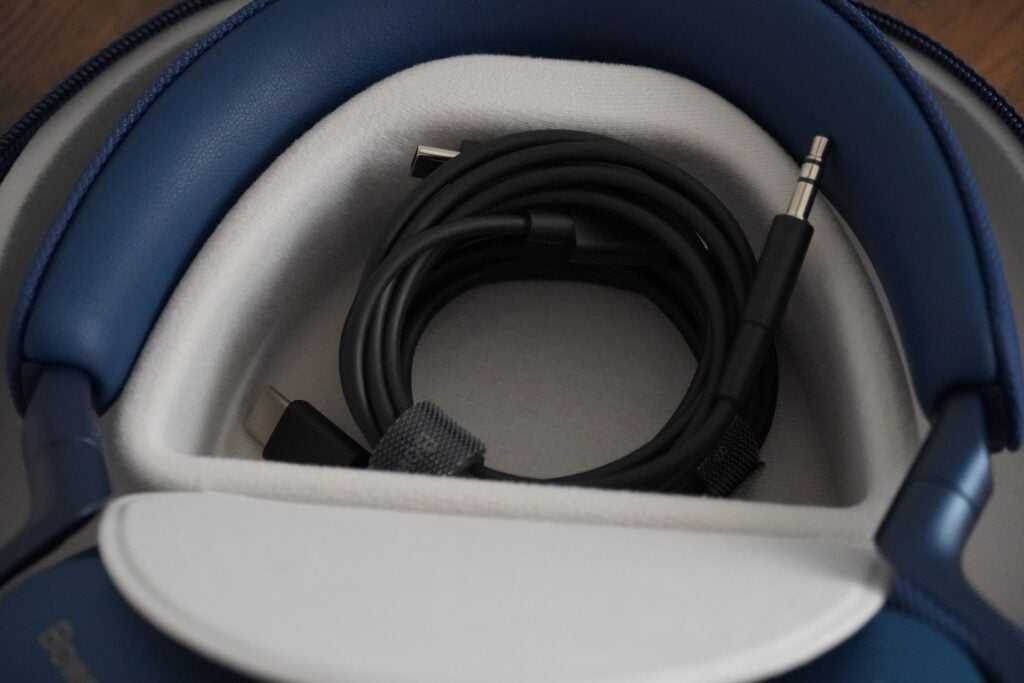
They can’t be collapsed inwards but can be folded flat and placed in the accompanying storage case. B&W says the case is slimmer than that of the PX7 – it’s slightly slimmer, but also slightly taller. There’s at least a better integrated pouch for storing cables.
B&W sticks with physical buttons, but they’re not quite as obvious as they were on the PX7. The right earcup is home to a power/Bluetooth pairing button – flick up to power the headphones, or push in further and hold to place the headphones in Bluetooth pairing mode. There’s also a volume and multi-function button that covers playback and track skipping. The buttons have a shallower profile; and while the multi-function button isn’t raised, it has a different texture which I have found makes it easier to locate.
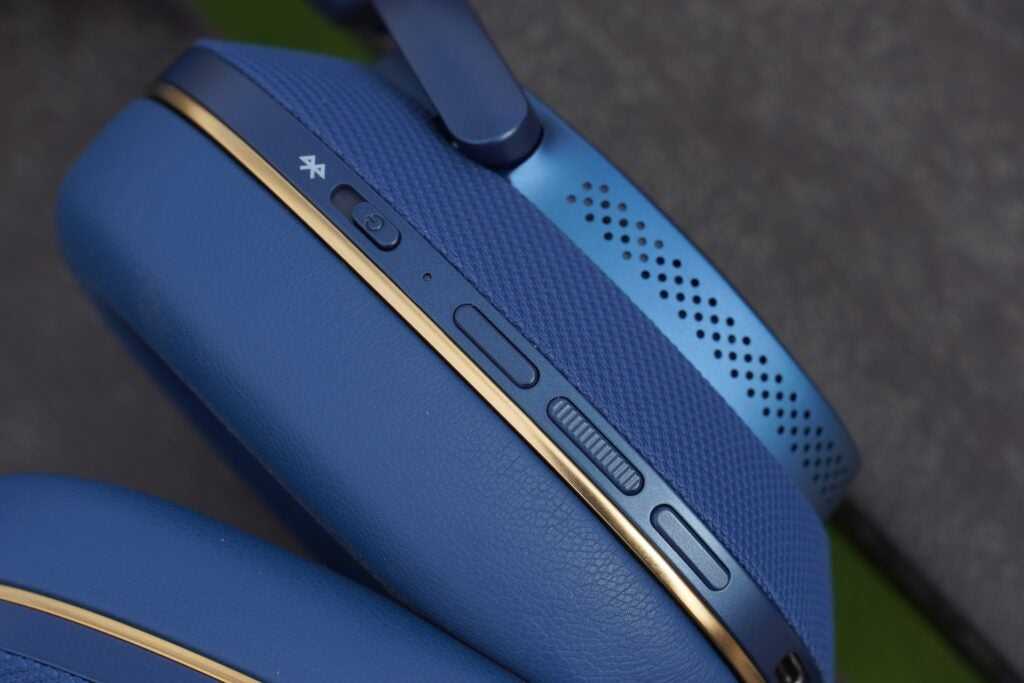
The Quick Action button toggles through the environmental modes (Noise Cancelling, Passthrough and Off), and within the Bowers & Wilkins Music app, it can be configured to bring up your device’s voice assistant. Annoyingly, you have to make a choice between the two – a long hold would have solved that issue.
Like Master & Dynamic’s MW75, the Px7 S2 ship without a 3.5mm port, packaging a USB-C cable for charging and a 3.5mm adapter for plugging the headphones into a wired source.
Bowers & Wilkins PX7 S2 review: Price and availability
(Image credit: Future / Simon Lucas)
The Bowers & Wilkins PX7 S2 are on sale now, and in the UK they’re priced at £379. In America they’ll set you back $399, while in Australia the asking price is AU$599.
I imagine it’s just a happy accident that these prices are precisely the same as those of the all-conquering Sony WH-1000XM5 that launched just a month earlier than the Bowers’ release.
Either way, it puts the PX7 S2 in direct competition with what are to all intents and purposes universally acknowledged as the best all-round headphones currently available (as well as an absolute stack of alternatives from the likes of Bose and Sennheiser that are constantly breathing down the neck of the WH-1000XM5).
Short of calling Tyson Fury’s Mum an unpleasant name, I can’t really think of a more difficult fight Bowers & Wilkins could have picked.
A High-End Design With Lots of Physical Controls
Available in black, blue, or gray, the circumaural Px7 S2 headphones uphold the Bowers & Wilkins tradition of stylish and luxurious design. A technical fabric material with a subtle sheen covers the top of the headband and some of the outer earcup panels, while faux-leather lines the memory foam earpads and headband cushions. A semi-matte finish on the outside of the aluminum earcups, in combination with these other materials, gives the over-ears a refined, modern look. The fit is exceptionally comfortable even over long listening sessions.
Our Experts Have Tested 77 Products in the Headphones Category This Year
Since 1982, PCMag has tested and rated thousands of products to help you make better buying decisions. See how we test.
(Photo: Tim Gideon)
Internally, custom 40mm dynamic drivers deliver the audio. The headphones are compatible with Bluetooth 5.0, plus support the AAC, AptX, AptX HD, AptX Adaptive, and SBC Bluetooth codecs. Unlike the Sony WH-1000XM5, you don’t get the high-end LDAC codec here, so you won’t get the highest possible bitrate out of audio streams over Bluetooth. Further, we expect headphones at this price point in 2022 to support at least Bluetooth 5.1, if not Bluetooth 5.2 for the latest profile support. That said, the headphones can handle up to 24-bit audio; for this to work, you must pair them with a hi-res streaming service that supports this spec and a phone that offers the AptX HD or Adaptive codecs. The latter requirement, unfortunately, rules Apple devices out.
Alongside the power/pairing switch, a series of physical controls line the right earcup’s side panel. A central multifunction button handles playback (press once), track navigation (twice for forward, three times for backward), and call management (press once to answer or end a call, twice to reject calls). Volume buttons on either side of the multifunction button work seamlessly with your device’s master volume. And to help you avoid pressing one of the volume buttons instead (they are close together and roughly the same size), the multifunction button features a distinct textured surface.
Similar Products
A Quick Action button sits on the left earcup; pressing it cycles through ANC, Pass-Through (transparent), and Off modes. If you want to summon your voice assistant directly from the headphones, you have to swap out the ANC on-ear control functions via the companion app—that’s an odd and annoying sacrifice, especially because so many manufacturers let you activate it by holding down a multifunction button.
In the box, you get a USB-C charging cable (you might need an adapter if that doesn’t work with your charging port options) and a USB-C-to-3.5mm audio cable. Other than these two items, the only other accessory is a zip-up, hard-shell protective case; the headphones fold flat to fit inside.
Bowers & Wilkins estimates that the headphones can last roughly 30 hours on battery, but your results will vary based on your typical listening volume and use of ANC. They require two hours to recharge fully, though you’ll gain seven hours of listening time after plugging in for just 15 minutes.
Do the B&W Px7 S2 sound like $400 headphones?
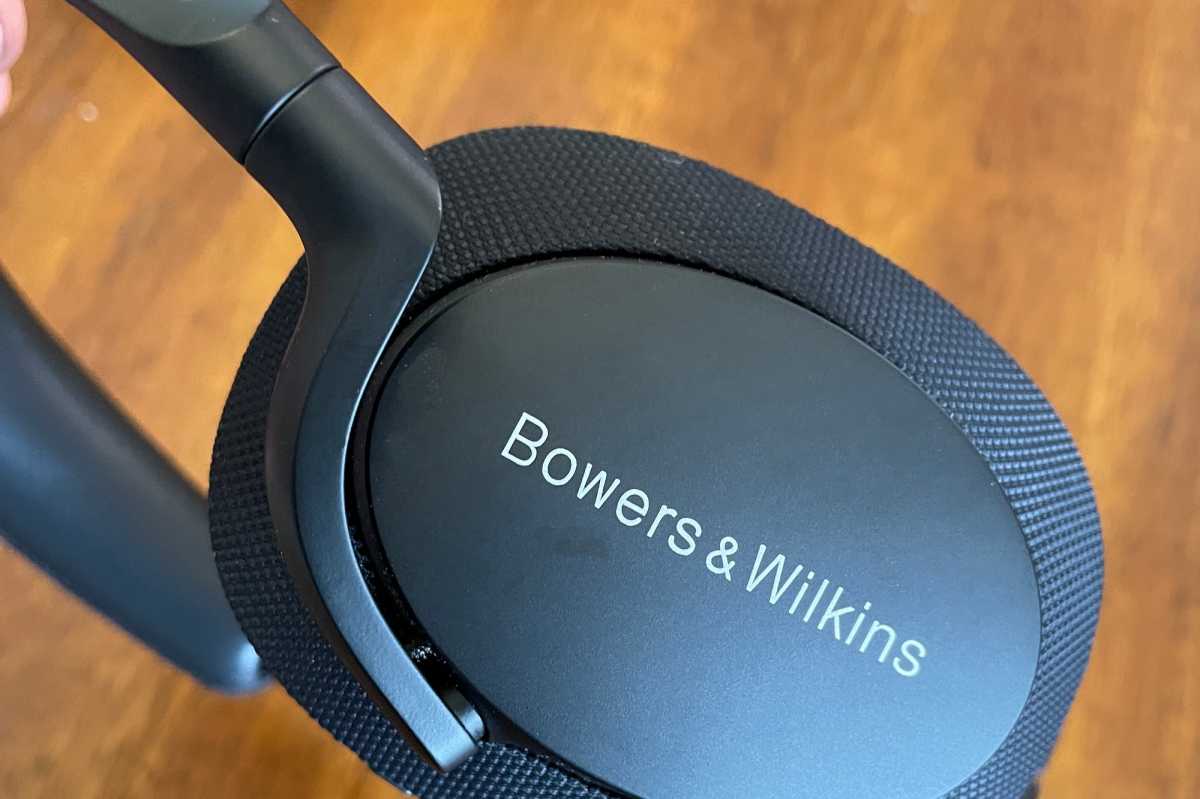
Despite their all-plastic construction, the B&W Px7 S2 feature robust build quality, including at the pivot points on the headband and ear cups..
Michael Brown/Foundry
Bowers & Wilkins fulfills its promise to deliver what it calls True Sound with the Px7 S2. These headphones deliver the sonic fidelity that audiophiles demand, even with active noise cancellation engaged. I could perceive no difference in audio reproduction with ANC on, passthrough mode engaged, or ANC off. To evaluate the headphones’ jazz chops, I listened to the 1962 Bill Evans, Shelly Manne collaboration Empathy, which was remastered to 24-bit, 96kHz in 2014. Playing “With a Song in My Heart,” the Px7 S2 rendered Evans’ piano and Monty Budwig’s bass with spectacular clarity, but Manne’s delicate work with his brushes on the snare and ride cymbal stand out even more.
I queued up Bruce Cockburn’s “Postcards from Cambodia” next. The Px7 S2 presented the track from Cockburn’s 2003 album You’ve Never Seen Everything streamed in CD quality on a sumptuously wide sound stage, yet you can easily pick out and focus on each instrument—guitar, marimba, bass, percussion—without losing track of the harmonic whole. Much of Cockburn’s vocals take the form of a spoken word poem, and you won’t miss a single phrase. And when Emmy Lou Harris joins him to sing harmony on the chorus, her angelic vocals take the song to a new level.
Playing a few Tower of Power tracks, including the raucous “Don’t Change Horses (in the Middle of the Stream)” from the band’s 1974 album Back to Oakland demonstrated the headphones’ ability to accurately reproduce intricate horn arrangements. This funk track has trumpets, saxes, trombones; the frenetic drum work of the great David Garibaldi, and Lenny Williams singing lead vocals. It sounded spectacular on the Px7 S2.
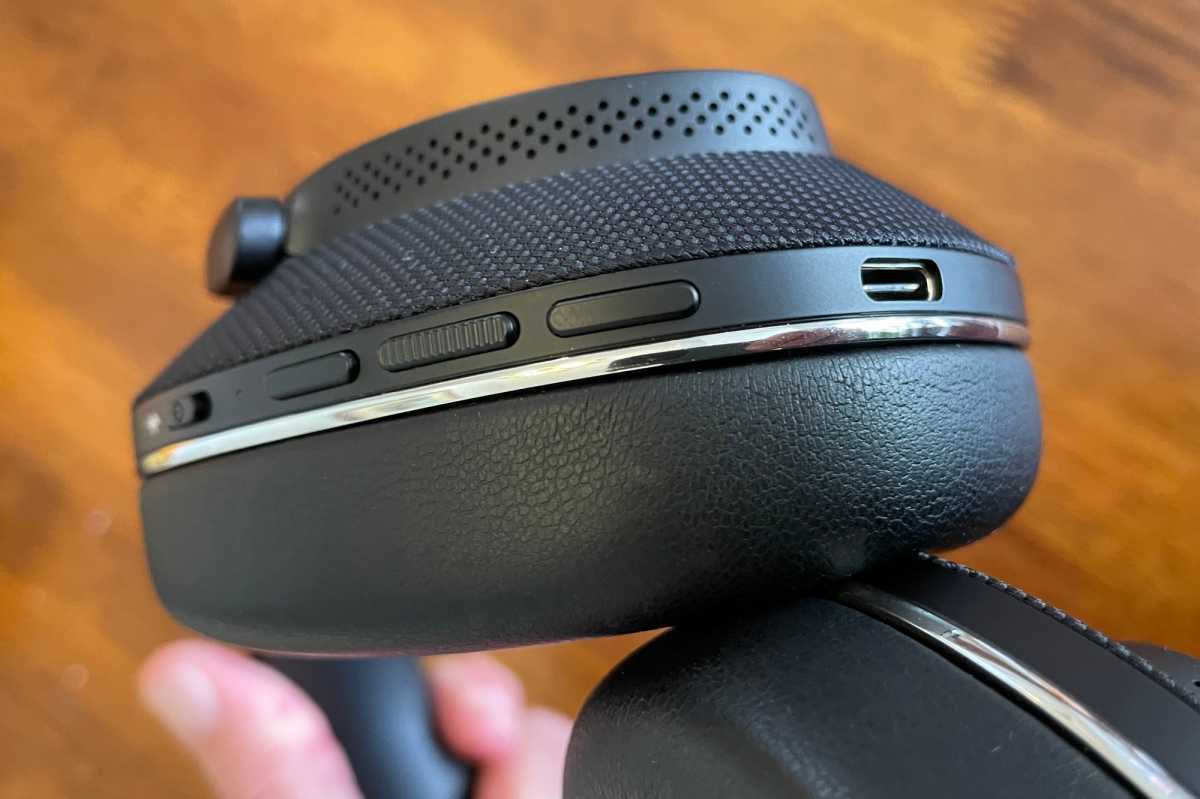
The B&W Px7 S2 have a lot of buttons. From right to left of the USB-C charging port: Volume down, pause/play, volume up, and a combo button for power and Bluetooth pairing.
Michael Brown/Foundry
Bowers & Wilkins PX7 S2: value
- High-end feel and finish
- ANC can be bettered at the level
- Not the most versatile headphones
This is Bowers & Wilkins and, as you’d expect, these over-ears certainly look and feel the part – plus, the USB-C charger can also be used to listen to wired music if your phone sports a USB-C connection (we did this with our Samsung Galaxy S21, no Bluetooth required). You get a USB-C to 3.5mm cable in the box too, in case you want to use them with source devices such as MP3 players, all of which adds value at the level.
If you really want the best ANC this money can buy though, there are better, more personalized options out there, and here we might point you to the Sony XM5 or (likely to be discounted) WH-1000XM4 over-ears.
For sound, certain music-lovers will love the extra clarity and detail through the midrange in pared-back or acoustic tracks. For us, the bass weight is just a little much at times (particularly when listening to grime or hip-hop genres) and this does count as a small mark against the PX7 S2.
Value score: 4/5
Bowers & Wilkins PX7 S2 review: Availability and price
The Bowers & Wilkins PX7 S2 goes for $399 and can be purchased at major online retailers, including and , or directly on the . It is sold in three colors: Black, Blue, and Gray. Bundled with the purchase are a woven carrying case, USB-C to USB-C cable, USB-C to 3.5mm audio cable, and manual.
For comparison, the PX7 S2 shares the same MSRP as the recently launched Sony WH-1000XM5. These headphones also more expensive than the category-leading Bose 700 ($379), which is regularly on sale, as well as other elite performers like the Sony WH-1000XM4 ($349) and Shure Aonic 40 ($249).
Be sure to bookmark our headphone deals page for the latest sales.
Кожа, металл, карбон
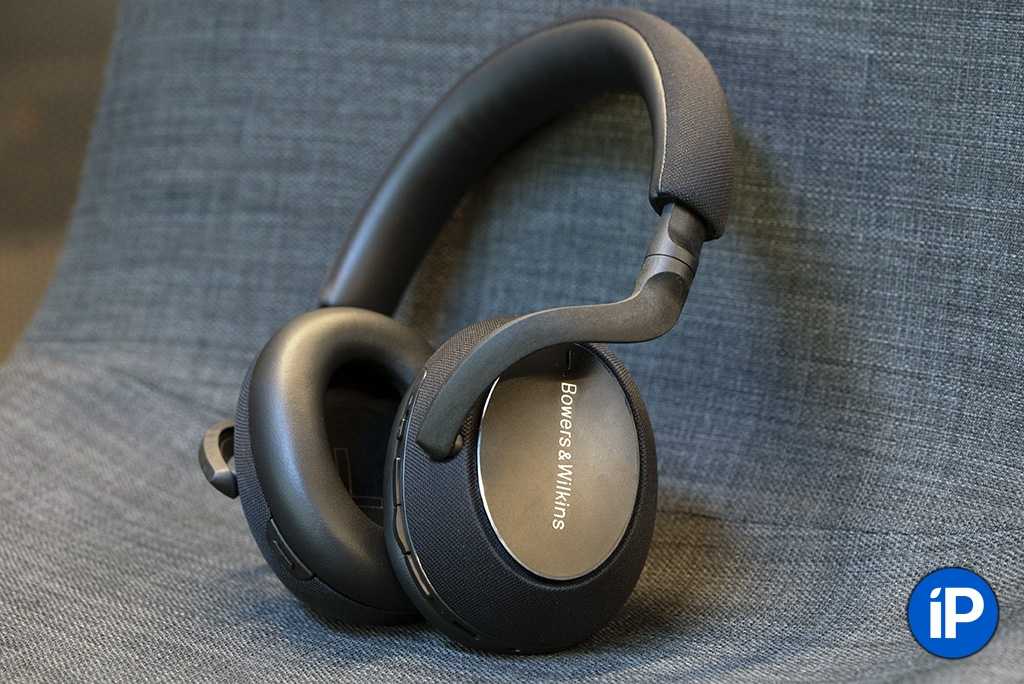
Если у некоторых брендов наличие кусочка кожи или алюминия в дизайне гаджета является признаком роскоши с соответствующим ценником, то наушники Bowers & Wilkins уверенно тянут на премиальный сегмент, хоть и стоят 26 990 рублей.
Большие овальные чашки с амбущюрами из качественной эко-кожи и с эффектом памяти, приятная на ощупь тканевая отделка, и главное – композитное армирование углеродным волокном. Признаюсь честно, я нечасто трогаю настоящий карбон и хочу отметить, что тактильные ощущения приятные.
Оголовье тоже обтянуто тканью с мягкой набивкой. На голове наушники сидят удобно и не давят. Возможно, не последнюю роль в этом играет как раз карбон, который довольно лёгкий материал. Наушники весят всего 310 гр.

Сочетание пассивного и активного шумодава понравится часто путешествующим людям. Амбушюры прилегают к ушам достаточно плотно, чтобы отсечь большинство посторонних шумов, а если этого не хватает, например, в самолёте, то у наушников есть продвинутая система активного шумодава, которая отсекает лишние частоты, практически не искажая звучание музыки.
Кстати, в PX7 Carbon Edition шумодав умный. Функция сама анализирует окружающий шумовой фон и автоматически выбирает нужный тип и уровень шумоподавления.
А если нужно услышать собеседника, или просто оценить обстановку, достаточно активировать функцию Ambient-Pass-Through, которая позволяет слышать определенные внешние звуки без снятия наушников, или просто отодвинуть одну чашку от уха, чтобы музыка автоматически приостановилась.
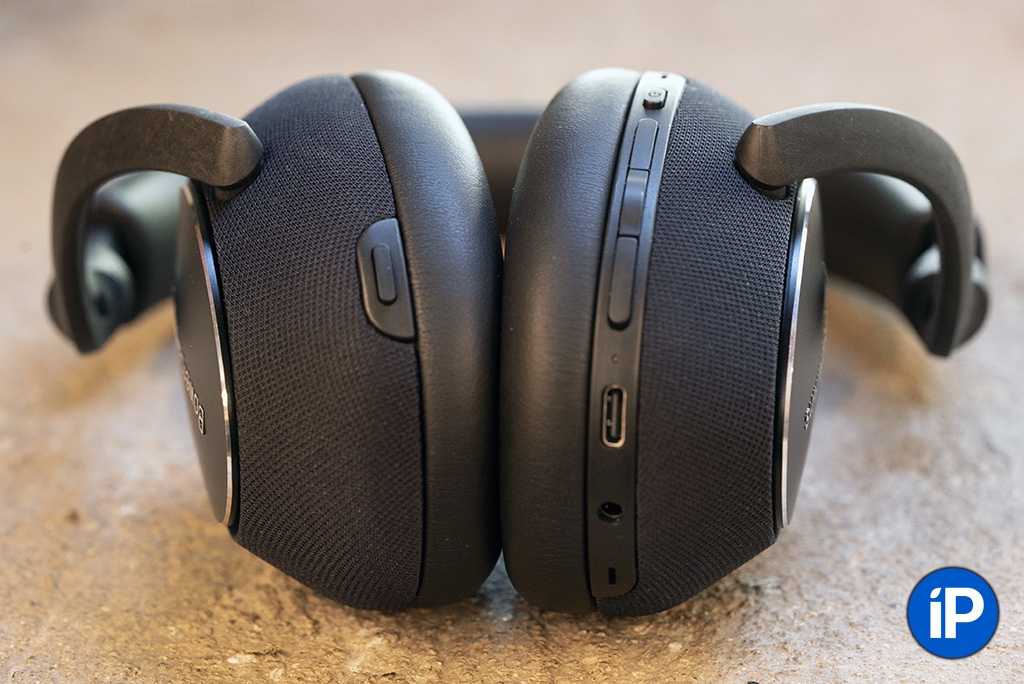 К наушникам можно подключить комплектный аудиокабель с разъёмами mini-jack на 3,5 мм и продолжать слушать музыку, даже если PX7 полностью разрядились.
К наушникам можно подключить комплектный аудиокабель с разъёмами mini-jack на 3,5 мм и продолжать слушать музыку, даже если PX7 полностью разрядились.
На чашках расположены элементы управления: кнопки воспроизведения, перемотки треков и управления громкостью. Есть отдельная качелька для включения наушников, она же активирует Bluetooth для спаривания PX7 с гаджетом.
Кнопки нажимаются с приятным кликом, легко нащупываются пальцем. Привыкаешь к управлению буквально за несколько минут.
Наушники заряжаются через USB-C, причём за 15 минут питания от розетки можно получить до 5-ти часов автономной работы. Всего же наушники проработают до 30 часов на одном заряде с включенным шумодавом.
Bowers & Wilkins PX7 S2 review: Call quality and connectivity
The PX7 S2 is reliable for voice and video calls. Every indoor conversation was met with positive feedback, with most friends saying I sounded loud and crystal clear. Background noises were silenced by the mics. Using the headphones outdoors was pleasant for the most part. Client calls in the gazebo went smooth, though clarity took a hit once stepping towards the front yard. Wind and speeding cars caused muffle on my end. Luckily, my wife was able to understand everything I said despite the background interference.
(Image credit: Alex Bracetti/Future)
Connectivity is spot on. Bluetooth 5.0 runs the show and grants up to 60 feet of wireless range. Google Fast Pair speeds up the pairing process for Android users. Pairing to Apple and Microsoft devices is a breeze as well.
(Image credit: Alex Bracetti/Future)
B&W also added multipoint technology to pair to two devices simultaneously, a feature that business users will appreciate since it lets them seamlessly switch from their phone to laptop (or vice versa).
Bowers & Wilkins PX7 S2 review: Performance and sound quality
(Image credit: Future / Simon Lucas)
I may as well cut to the chase here: the Bowers & Wilkins PX7 S2 sound outstanding, with occasional deviations into ‘excellent’ and even ‘glorious’.
As far as explaining the entirety of the frequency range from top to bottom, while retaining all of the details, keeping tonality even and convincing, and making the soundstage as big and explicit as possible, the PX7 S2 are among the best sub-£/$400 headphones you can buy. And that’s not the limit of their talents.
So yes, tonality is consistent, and from the (deep, textured) low frequencies to the (politely bright, substantial) top-end the Bowers & Wilkins are entirely even-handed. Detail levels are impressive-going-on-startling, and the PX7 S2 lay out a substantial and well-organised soundstage. Every part of a recording gets a comfortable amount of space in which to do its thing, but everything relates smoothly to everything else and nothing sounds estranged.
The midrange performance, though, is where the Bowers & Wilkins keep their truly stellar talents. Singers are given every possible chance to express themselves by the Px7 S2 – the headphones carry so much information that a vocalist can’t help but sound like a characterful individual, able to express emotion and attitude explicitly.
When it comes to rhythmic expression the Bowers & Wilkins don’t lead the pack, but they’re very competent nevertheless. They can generate a degree of sinuousness to their presentation if the music demands it and, while they don’t quite have the stern rhythmic control demanded by the more intense end of EDM, they’re far from impassive. And it’s a similar story where both the broad and fine dynamic elements of a recording are concerned – the PX7 S2 have more than enough about them to make the harmonic changes, as well as the changes in levels of attack, plain.
The changes Bowers & Wilkins has made to its active noise-cancelling circuitry seem successful too. While it’s true that some similarly priced alternatives can deal with even more external sound than the PX7 S2, these headphones are no slouches. And they can handle the bulk of ambient noise without leaving any trace of how hard they’re working, or altering their sonic characteristics in any way.
‘Passthrough’ works well too, external sounds given a judicious boost of volume but not sounding in any way unnatural. And it’s a similarly accomplished story where call quality is concerned.
CONCLUSION:
Bowers & Wilkins PX7
I love the look of these headphones. I sort of think these are worth a purchase. They still have been a pleasure to wear and honestly it’s getting close, so close with the best of the best out there. The little differences are negligible.
Bose Noise Cancelling 700
Over all, Bose has definitely taken steps to improve the technology and features found in their newest ANC headphones. The Active Noise Cancelation on the NC 700’ performs over all better than the QC35’s because they have less cabin pressure, they do a better job of rejecting wind noise, and it doesn’t change how these headphones sound when turned on. The inclusion of an ambient mode has been a long time coming and for the most part it works very well.
BATTERY:
Bowers & Wilkins PX7
Bowers and Wilkins provides up to 30 hours of use with active noise-cancelling on. I’m able to achieve 31 hours and 14 minutes worth of real world use. The Bowers and Wilkins did better by around 10 hours compared to Bose 700 and Sony 1000XM3. In addition, there’s also fast charging, 15 minutes plugged in from a dead battery will give you back 5 hours of audio that’s also really good.
Bose Noise Cancelling 700
When it comes to battery life, these headphones have an advertised battery life of 20 hours which is the same as the Bose QC35’s. Now a 20 hour battery life is nothing to scuff at, but most ANC headphones these days are aiming for a 30 plus hour battery life now. But, at least the fast charging on these headphones has been upgraded from the Bose QC35’s cause a 15 minute charge from a dead battery will get you 3 and half hours of playback time.
Design and Sound that Stand Out
We like plenty about the luxurious, refined Bowers & Wilkins Px7 S2 headphones. They look and sound great, support up to 24-bit playback, and work with plenty of Bluetooth codecs. If noise cancellation is your top priority, however, you should turn to the Bose QuietComfort 45 or the Sony WH-1000XM5, both of which are notably better in that regard. But, otherwise, you might be able to justify the Px7 S2’s high price simply thanks to their audio performance, design, and comfort. Besides, they’re not nearly as costly as the $599 Master & Dynamic MW75.
Bowers & Wilkins Px7 S2
4.0
See It
$399.00 at B&H Photo Video
MSRP $399.00
Pros
- Strong audio performance, with rich bass depth and bright highs
- Excellent mics
- Comfortable fit
- Luxurious design
View More
Cons
- Noise cancellation isn’t in line with the price
- In-app EQ is overly simplistic
The Bottom Line
The high-end Bowers & Wilkins Px7 S2 headphones look, feel, and sound fantastic, which makes their less-than-impressive noise cancellation capabilities forgivable.
Like What You’re Reading?
Sign up for Lab Report to get the latest reviews and top product advice delivered right to your inbox.
This newsletter may contain advertising, deals, or affiliate links. Subscribing to a newsletter indicates your consent to our Terms of Use and Privacy Policy. You may unsubscribe from the newsletters at any time.
Thanks for signing up!
Your subscription has been confirmed. Keep an eye on your inbox!
Sign up for other newsletters
Alternatives to consider
That said, there are plenty of formidable alternatives that you may also want to consider:
The direct competitor to the Bowers & Wilkins flagship, Sony’s WH-1000XM5 is ZDNet’s top choice among the best active noise-canceling headphones, and is priced aggressively at $399.
The Apple AirPods Max’s $549 still gives off a bit of sticker shock, but recent (and occasional) sales have seen the headphones sell for as low as $429. At that price, it’s hard to compete against the high-fidelity audio and exceptional microphone quality of Apple’s latest.
One of the more comfortable noise-canceling headphones, the Bose NC 700 is lightweight, has large earcups for a spacious sound stage, and brings a refreshing look to the over-ear market. It also comes bundled with a charging case. Yes, a carrying case that doubles as a charger.
Bowers & Wilkins PX7 S2 review: Design and usability
(Image credit: Future / Simon Lucas)
Just as is the case where performance is concerned, Bowers & Wilkins understands its strengths and plays to them. Sony can have the eco-credibility and the vanishingly light weight – the PX7 S2 are about carefully specified materials, carefully assembled and an aesthetic that’s just the right side of opulent.
Where they contact the wearer, the PX7 S2 are mostly memory foam-filled leather – and very soft and aromatic it is too. Where they don’t, these headphones are hard-wearing, tactile and flawlessly applied fabric or similarly high-quality plastic. Build quality seems impeccable, and thanks to a reworking of both the headband arrangement and its clamping force, the Bowers & Wilkins PX7 S2 are comfortable to wear even for the equivalent of a long-haul flight. Yes, at 307g they’re almost 60g heavier than Sony’s flyweight WH-1000XM5 – but once they’re in situ they really don’t feel it.
As far as control goes, the PX7 S2 don’t have the wide-ranging options of some rivals, but what they do have is very nicely implemented. Physical controls extend to buttons for volume up/down, play/pause, skip forwards/backwards and power on/off/Bluetooth pairing on the edge of the right earcup, just above the USB-C socket.
There are USB-C/USB-C and USB-C/3.5mm cables in the tidy, nicely finished carry-case, because the USB-C socket can be used for both power and data transfer.
There’s a button on the left earcup, too, which can be defined as either wake voice assistant (that’s your source player’s native assistant, you understand – there’s no built-in voice assistant here) or scroll through noise-cancelling options (which are on, off or passthrough for amplified ambient sound).
Choosing the function of that button is done in the Bowers & Wilkins Music control app (for iOS and Android). I like this app – it’s as music-centric as the name implies, it’s clean and stable, and it doesn’t overload you with options. In fact, apart from defining the function of the left-side button and accessing some EQ adjustment, there really aren’t any options. Some will undoubtedly prefer the deity-like control they get with Sony’s Headphones app for its headphones instead, of course.
Verdict
All a pair of headphones can do is sound, look and feel great – and the B&W PX7s tick all three boxes. In our initial hands-on review, we predicted that the PX7s would be up there with the very best noise-cancelling headphones, and that’s where they sit.
The Sonys might have pipped them to a 2019 What Hi-Fi? Awards Best Buy, but these are fine alternatives – especially for those who value sonic sprightliness and street-cred style.
SCORES
- Sound 5
- Comfort 5
- Build 4
MORE:
The best noise-cancelling headphones on the market
The best wireless headphones you can buy
Read our Sony WH-1000XM3 review
Read our Sennheiser Momentum Wireless review
Bowers & Wilkins PX7 S2 review: Battery life
B&W has only confirmed that a full charge equates to 30 hours. We don’t know whether this is with ANC on or off. Our testing showed the advertised playtime was close to accurate when noise cancellation was disabled. Turning it on dropped playtime down to 26 hours. That’s still sufficient for 4 to 5 hours of use daily over the course of a workweek.
(Image credit: Alex Bracettii/Future)
The PX7 S2 has some of the best quick charging technology in the category. A 15-minute charge generates 7 hours of listening time. The Sony WH-1000XM5 can do 5 hours in 10 minutes and luxury models like the $1,000 Mark Levinson No. 5909 net you 6 hours in 15 minutes.
How well do the B&W Px7 S2 handle noise cancelling and phone calls?
There was a time when I considered active noise cancellation anathema. How can any headphone cancel the whir of an air conditioner or the rumble of a jet engine without also cancelling out musical passages occupying the same frequency ranges? The best minds in the industry have cracked that code, and you no longer need to worry about it—at least not at this level. Bowers & Wilkins is newer to this game than Bose or Sony, but the Px7 S2 deliver excellent noise cancellation with virtually zero impact on music reproduction.
These headphones use four microphones—two that measure the output of each drive unit and two that monitor and react to outside noise—for hybrid active noise cancellation. Two additional mics are used for phone calls. A pass-through mode brings some sound from the outside world for a degree of situational awareness. As mentioned earlier, pass-through mode can be activated from within the B&W Music app, or you can program the Custom button on the left-hand ear cup to toggle the function on and off.
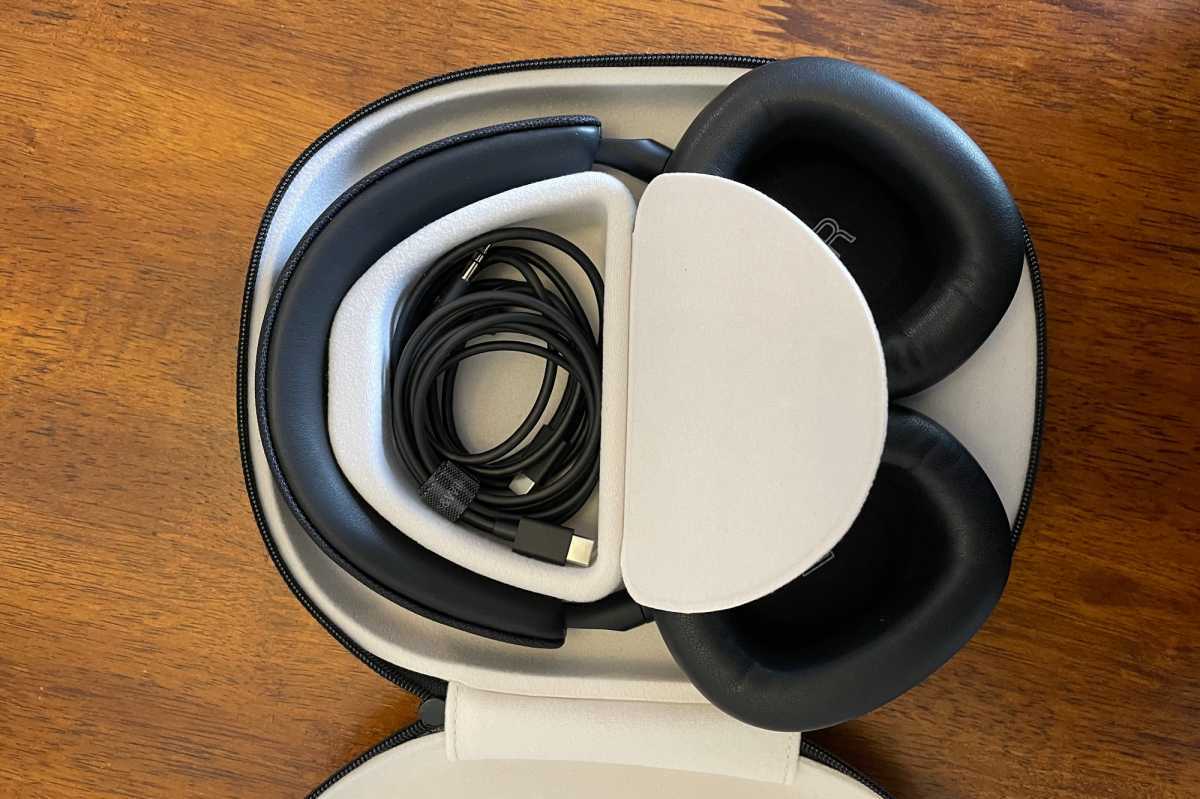
The B&W Px7 S2’s hardshell traveling case has a compartment for storing your cables. A USB-C charging cable is included, along with a USB-C-to-3.5mm audio cable.
Michael Brown/Foundry
I relocated to Portland, OR last fall and was surprised by a heat wave while I had the headphones in for review. Most Portland homes—mine included—don’t have air conditioning, so I set up a personal-sized evaporative cooler next to my desk and cranked it up to its highest setting. I measured an average of 50dB of noise at ear level an arm’s length from the cooler. I wasn’t able to measure decibel levels inside the headphones, of course, but with noise cancellation activated, I heard almost nothing at all—just a soft shush of white noise. I also played some simulated aircraft cabin noise over a powered bookshelf speaker system and the Px7 S2 eliminated nearly all of that noise, too.
I made a number of phone calls while wearing the Px7 S2, and the people one the other end of the line consistently sounded natural and said the same of me, even when I was outdoors in breezy conditions.
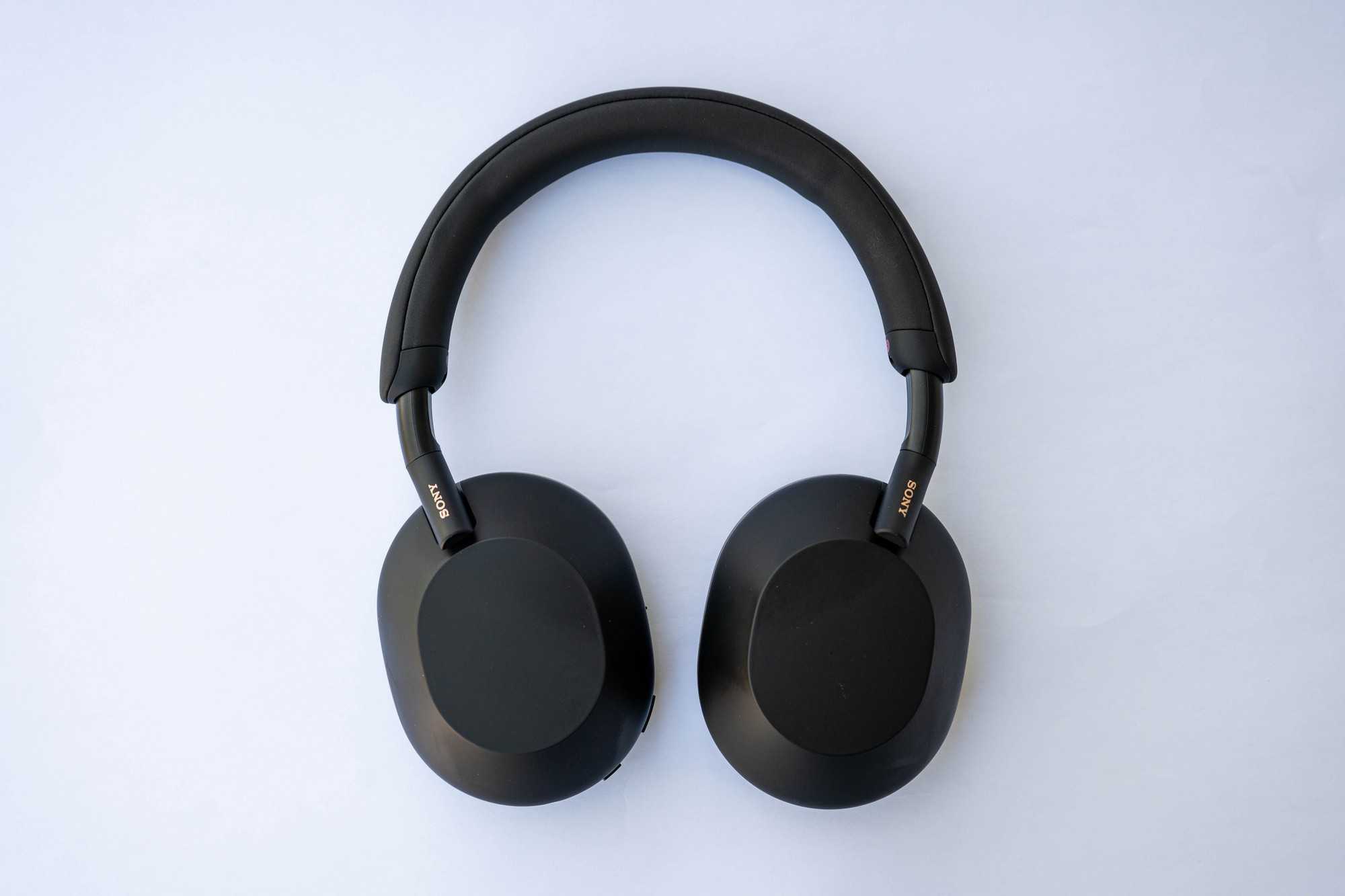
Battery life, charging times, and traveling with the B&W Px7 S2
The Px7 S2 uses a lithium polymer battery, and Bowers & Wilkins says you can expect 30 hours of listening between full charges. A full charge requires about two hours, but a 15-minute quick charge will yield a generous seven hours of playing time. You won’t be surprised to hear the headphones have a USB-C charging port, or that B&W provides a USB-C-to-USB-C cable for this purpose. You’ll also find a USB-C-to-3.5mm cable in the box that lets you connect the headphones to analog music sources. One item the company doesn’t supply is an adapter for plugging the headphone into an airplane armrest.
Many people buy noise-cancelling headphones for traveling, and the Px7 S2 fold relatively flat to fit into an attractive, cloth-wrapped, hard-shell case. The case is lined with a micro-fiber fabric, and a compartment with a magnetic catch provides a place to store your cables. You should also be able to fit a small AC adapter in that compartment, although B&W doesn’t provide one. I didn’t have a pair of Sony’s latest ANC headphones for comparison, but I do have the previous-generation WH-1000XM4 and they fold into an even more compact package.
Introduction
In terms of when and how you announce your latest headphones, an image at the bottom of another company’s page isn’t the pomp and ceremony you’d be after.
But that’s exactly happened to Bowers & Wilkins’ Px7 S2, which were outed earlier in 2022 on Qualcomm’s website. But little did we know that B&W had another card to play, with the announcement of the more expensive and higher-end Px8 coming later.
That might lead some to believe that the Px7 S2 are the entrée to the main course, but that isn’t how B&W is treating them. These headphones sport a sleeker, slimmer look over the PX7, benefit from a revised noise cancellation algorithm and a new app. But they face competition, chiefly from the Sony WH-1000XM5.
Комфорт, органы управления и подключения
Mixed App Experience
We tested the Bowers & Wilkins Music app (available for Android and iOS) in beta mode. It works fine, is easy to navigate, and includes several useful features beyond simple firmware upgrades. For instance, you can toggle certain functions, such as the Wear Sensor (which initiates playback when you put the headphones on or pauses playback when you remove them) or Auto Standby (a low power state that kicks in after 15 minutes of inactivity). As mentioned, the app also allows you to reprogram the Quick Action button to handle your voice assistant.
The EQ is also lackluster. Instead of five adjustable bands, you get simple treble and bass faders to raise or lower levels. That’s better than nothing, but we expect a lot more from headphones that cost this much.
Finally, the app failed to immediately connect with the headphones several times, even though our iPhone had no such auto-pairing issues. Again, the app was in beta mode, so we hope Bowers & Wilkins addresses at least a few of these negatives.
ANC Performance Could Be Better for Price
The headphones deliver solid noise cancellation, but aren’t as effective at suppressing unwanted sound as we expect at this price. They noticeably dialed back powerful low-frequency rumble (like you hear on an airplane) in testing. They also tamped down the lows and mids from a recording of a busy restaurant with clanging dishes and boisterous conversation.
But in an A-B test with the Bose QuietComfort 45, the Bowers & Wilkins headphones aren’t nearly as competent. Both the Bose and Sony models work more effectively against deep rumbles, as well as the varied signals in the high-mids and highs.
(Photo: Tim Gideon)
The headphones don’t add much hiss to the signal, which is always good news, but the ANC’s audible positional shifts may throw you off. When you turn your head, for example, the ANC adjusts in real time and you can hear this change (some users might even feel the effect in the form of ear pressure). The Apple AirPods Max ($549) also have this quirk (and even the Sony WH-1000MX5 does to a far lesser extent), but the Bose model doesn’t.
The transparent Pass-Through listening mode works fine—the mics accurately reproduce surrounding sounds without boosting the signal too much.

